Here is one of my loudspeaker projects that I done. Some is gone, few as been sold, but this I kept with me. Even if it will be not the best sounding speaker in the Word, I like it the way it sounds. To be honest, I would need a quite bigger room but I am lucky enough…because my wife like it also! So I ended up to place this two babies in my small study room, quite aware I would need another house to place them properly. .( What I can say, is that I love classical music, and these keep me listening and listening, especially with my beloved Bach organ’s music. Everyone who had hear a real big pipe organ will know how difficult is to reproduce this musical instrument…well, we can say this is an organ pipe speaker…but not only ! Just think fundamental resonance of a 32 foot pipe is 16Hz, that is below hearing range.
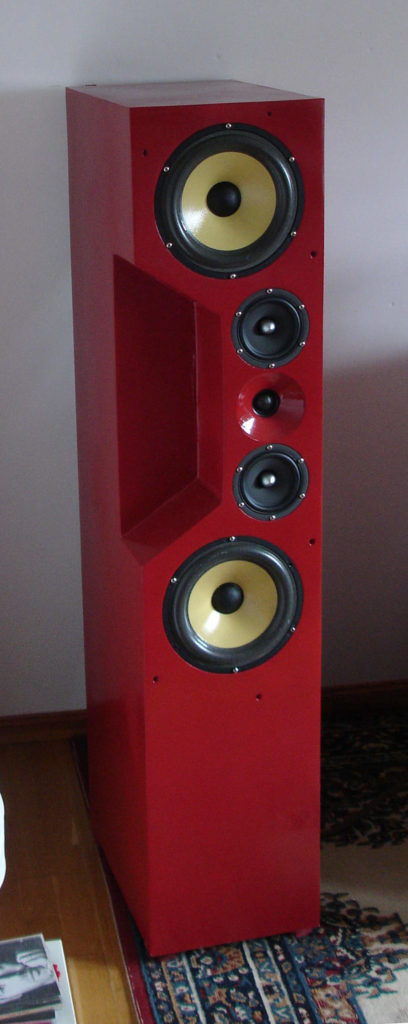
Loudspeaker is a 3 way design with 5 drivers in symmetric configuration, about 1,4m tall with an internal volume of about 100 liters.
Woofer type is 8″ scan-speak 21w/8554, now sadly discontinued. This high quality driver comprises a low mass yellow Kevlar cone, the foam surround and the very linear motor. Despite the low moving mass of about 20g, the resonance frequency is only 23 Hz due to the high suspension compliance , while Qts factor of 0,22 only make bass-reflex the proper way to load it. These parameters suggest aalso driver very sensitive to loading, and despite the low resonance frequency it can be used even till 1-2 kHz region. Sensitivity is very good at 90dB (2.83V/1m). The drawback is that it requires an high volume to properly go down to low octaves.
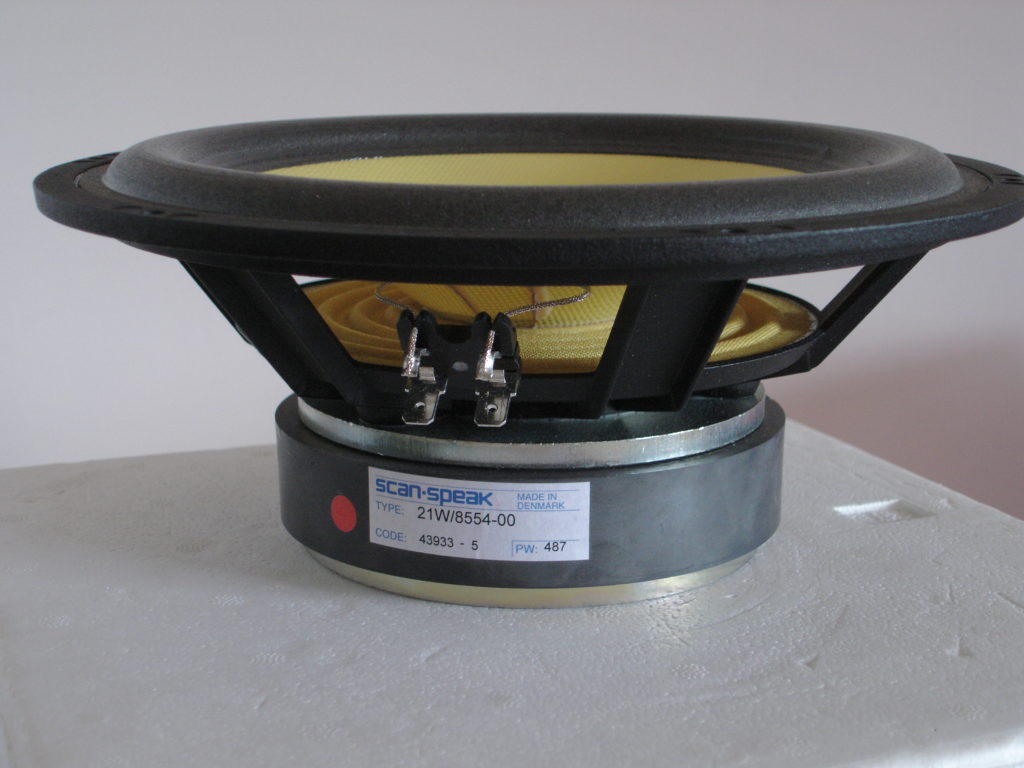
Midranges are 4,5″ Seas W12CY003. This driver has been choose because of the very regular and broad frequency response, which is a prerequisite for the use of low-order crossover networks, like here. Large windows in the basket both above and below the spider reduce sound reflection, air flow noise and cavity resonance to a minimum. Is is a real woofer with large excursion but here has been used as midrange.
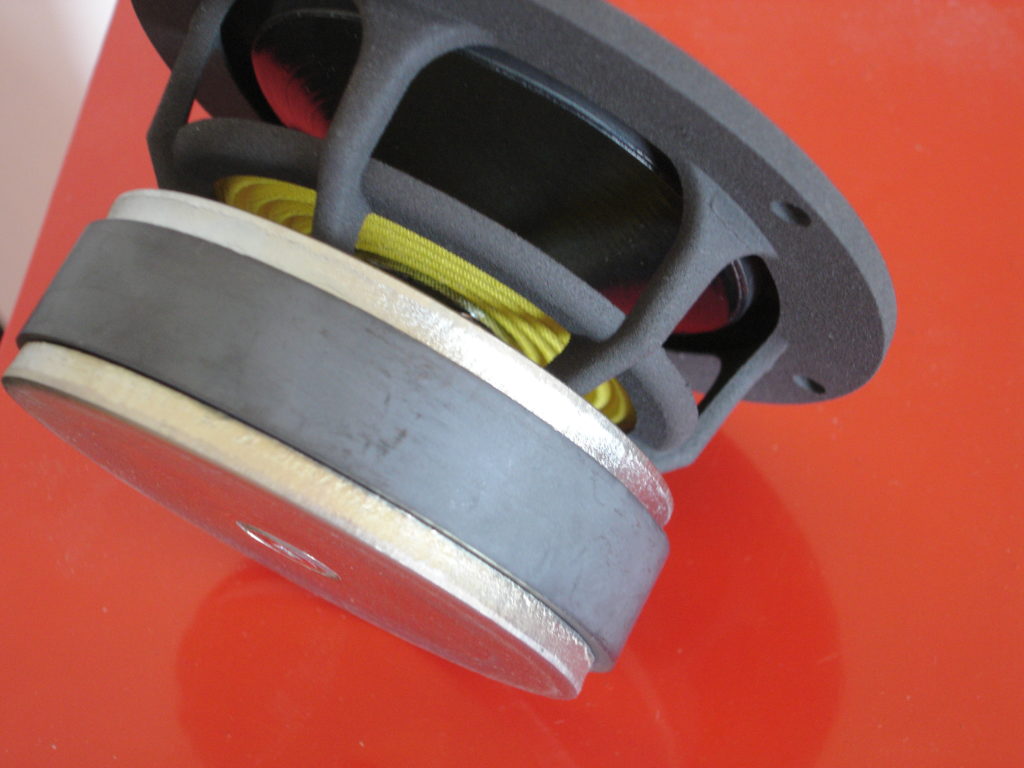
Tweeter is again from scan-speak, the well know D2905/9700. Again these tweeter component has a very broad frequency response and to be a tweeter has a low resonance frequency of 500 Hz only. Again the idea is to use these characteristic with a low-order crossover. One important feature in this speaker, is that tweeter isn’t mounted on front panel, but it operates together with a small waveguide. This waveguide isn’t intended to be an horn, but allows to recover few dB from the lower frequency range. This is helpful also because the first order filter. Additionally it allows to shift the emission center to be aligned with midrange. Musically this should give a better performance.
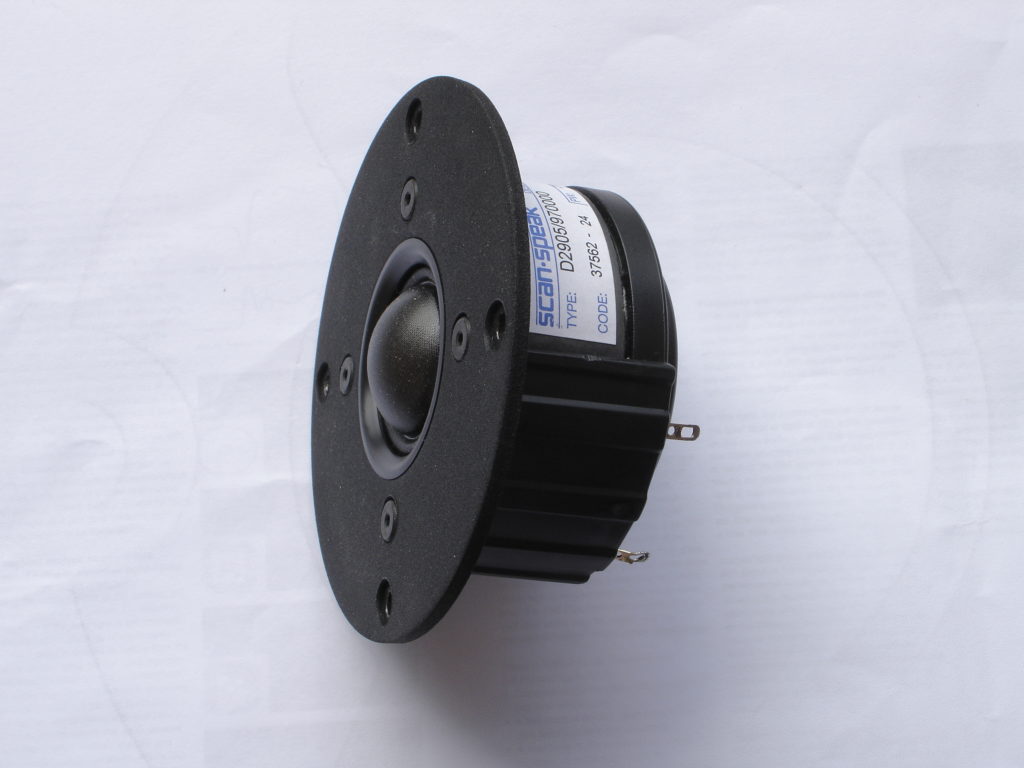
So why should I use first order crossing ? Well, let’s say that, in theory, a large superposition among the different ways should give a better overall image presentation, as the transition is smoothed by a large portion of frequencies which are shared. Also relative acoustic phases are preserved. Crossover schematics can be see here. Tweeter is crossed at 2,5 kHz by a single 10uF condenser. The RLC network compensates tweeter resonance at 500Hz and also attenuates this range of frequencies allowing tweeter to operate in safe. Midranges are crossed again by first order bandpass filter, and RLC parallel network just attenuates 400Hz region. Last woofers are filter by a 2 order filter, with a resistor on condenser for proper dumping. RLC network in this case acts around 100Hz and helps the alignment to the upper way. A side effect, is that by limiting this region the lower bass gains also allowing to improve lower extension.
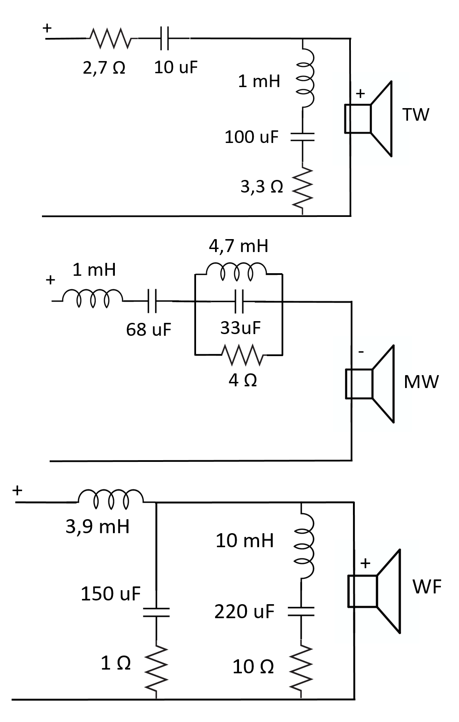
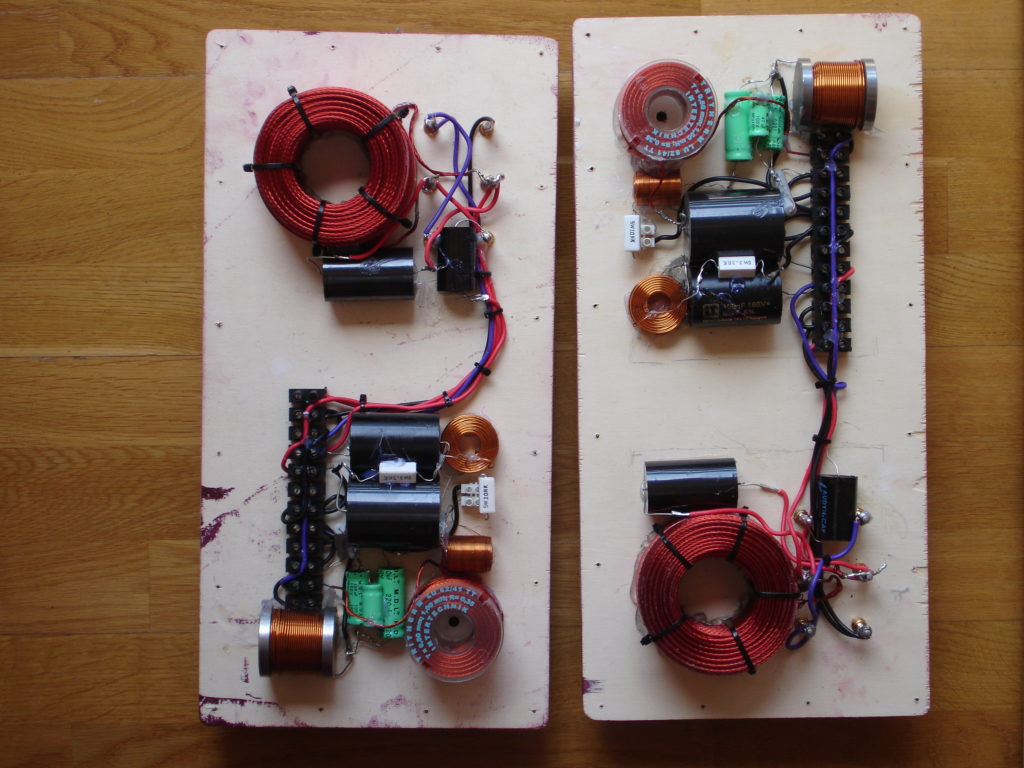
Here I put 2 graphs to compare simulated and measured impedance. As you can see there is a good correspondence between the two. Bass reflex is tune at 30Hz and losses are calibrate by using acrylic absorbent.
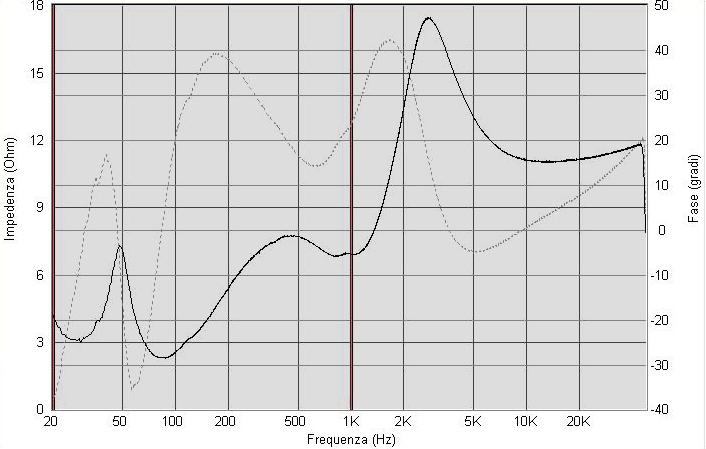
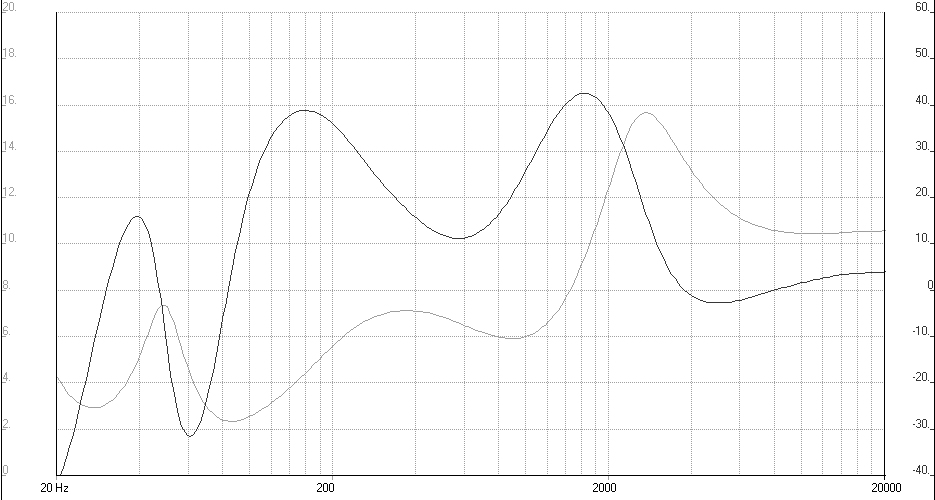
I didn’t find the measured frequency response, maybe has been lost in some hard disk, so I put here the simulated one.
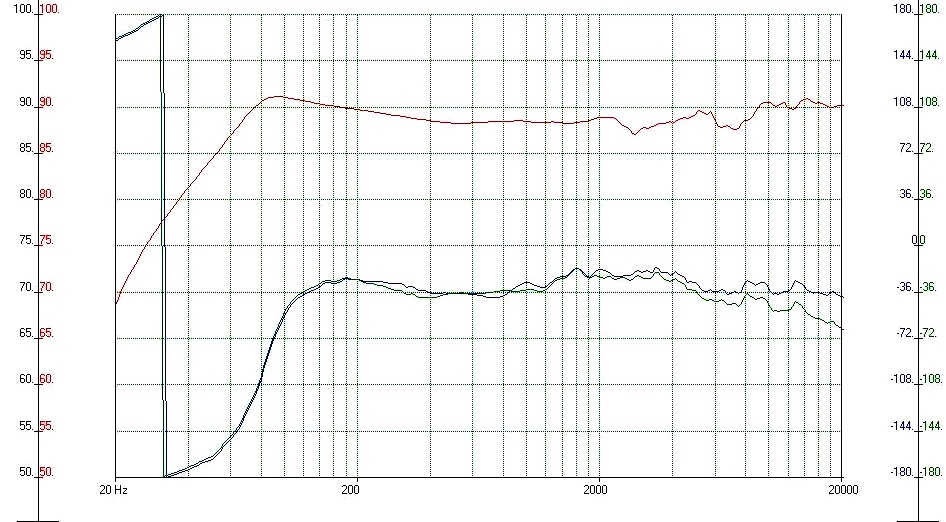
From simulation you see frequency response id very regular but not flat, but keep in mind on-axis response is only one “photo” of the acoustic field, Other important factors that affect loudspeaker sound is the dispersion for different vertical and horizontal angles, and the room acoustics. Also relative phase has to be considered, because this effect image 3D reconstruction.
Few words about cabinet, made by 30mm thick multilayer wood. Reflex conduit is on the bottom, midranges operate in a closed box. Baffle width has been reduced as much as possible close to tweeter area to improve dispersion.
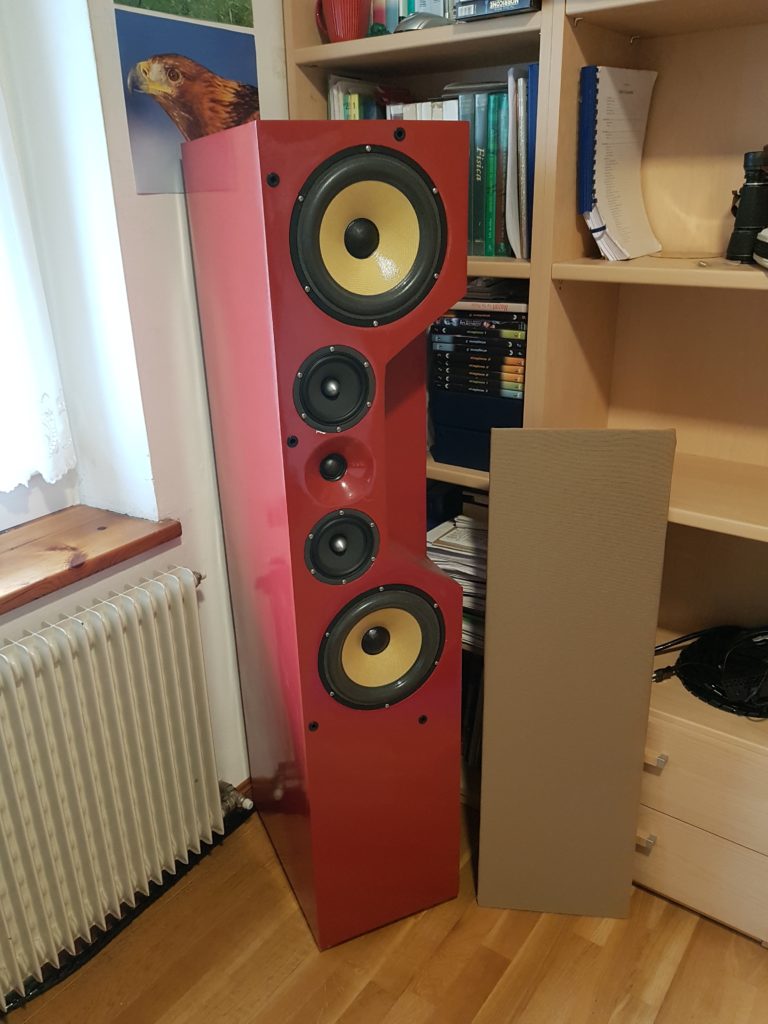
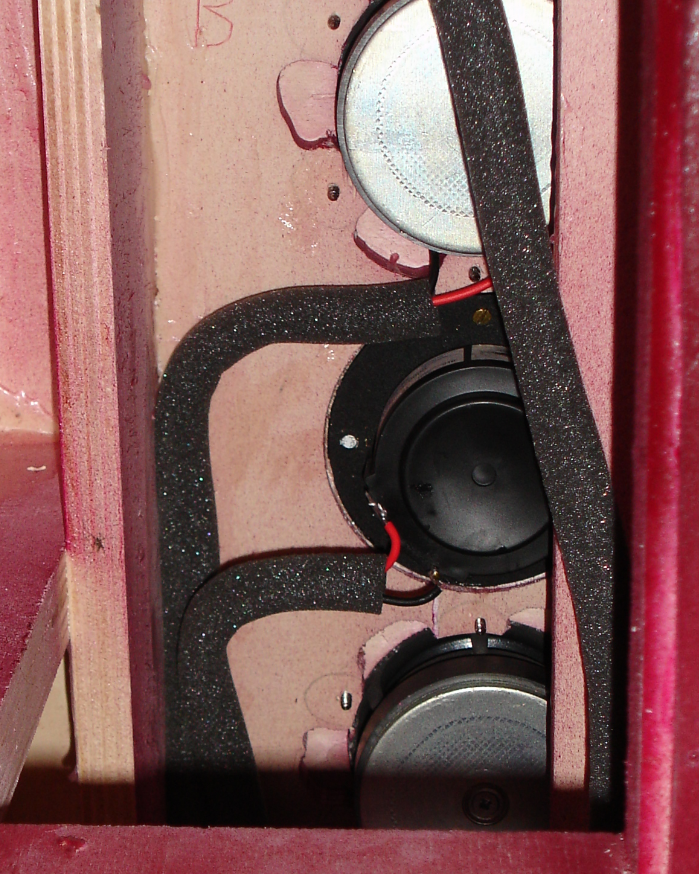

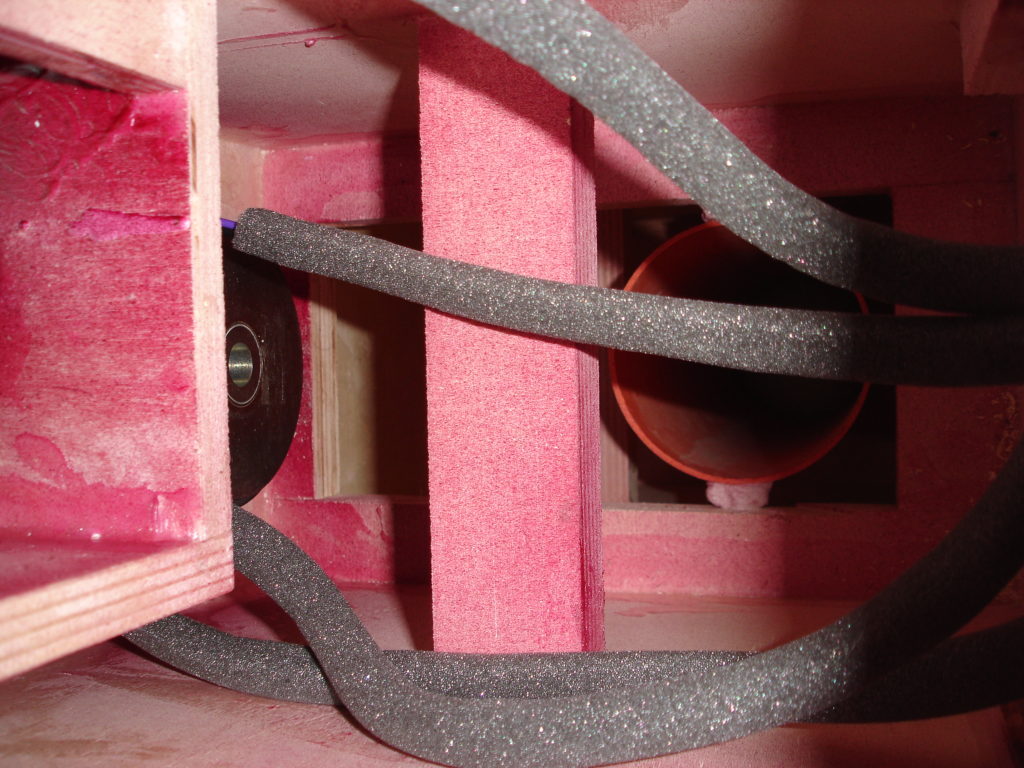
Salve
Complimenti per il lavoro. Sempre contento delle tue caase?
Io sto provendo di ottimizzare il filtro dei miei tweeters d2905/9700 ma non so se il mio il filtro di impedensa et buono
Trovo che il tweeter e po dispiacevole negli acuti forse conviene agguingere una self ?
Buon pomeriggio
LAurent
Grazie mille Laurent! senza uno schema è difficile dire qualcosa. Comunqnue il tweeter 9700 è molto sensibile alla qualità delle elettroniche, forse il problema è lì.